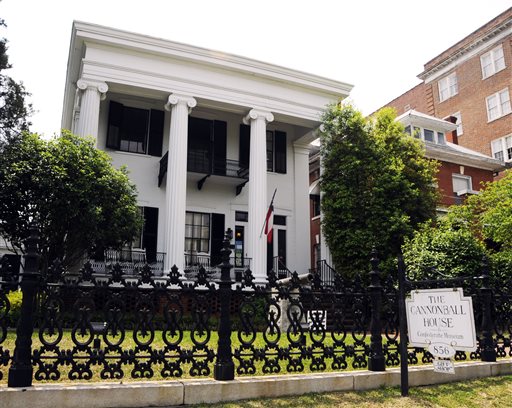MACON, Ga. - The house got the name because it was struck with a cannonball fired from a mile away by Union troops. Earl Colvin, director of the Cannonball House, led the tour and showed the spot inside the Ocmulgee National Monument from which the shot was fired.
The location can be easily seen by anyone visiting the monument. It's the grassy area surrounding the old farmhouse near the entrance. Union troops fired on the city from there, but the artillery shell that struck the front of Cannonball House was a dud and never exploded.
"If it had, we wouldn't be here right now," Colvin told about 20 people who were on the first of two tours recently. "There wouldn't be a Cannonball House."
While Macon never saw a major battle during the Civil War, it played a significant part in supporting the troops. It became an industrial hub of the Confederacy, Colvin said, and had the world's largest armory at the time.
It also was a common location to send injured troops. After the Battle of Shiloh, the population of Macon exploded as injured soldiers were sent here, Colvin said. Wesleyan College students were heavily involved in caring for the soldiers.
Another notable location isn't much to look at until Colvin explains its significance. At the corner of Broadway and Plum streets is what looks like the foundation of an old building. In fact, it is the platform of what was called the Union Depot, a name the train station had before the Civil War broke out.
On Nov. 2, 1864, Colvin said, Confederate President Jefferson Davis stood on that spot and urged Macon residents to support the war effort "at all costs."
Colvin said he found it remarkable that Davis would visit Macon during a time when the Confederacy was struggling to survive.
"He saw the urgency of Georgia falling," Colvin said.
When the Civil War began, Macon had 8,247 residents, and 2,300 of those left to go fight in the war, Colvin said. The manufacturing that went on during the war was largely done by women and slaves.
The war left 487 widows in Macon and 1,000 orphans.
"There was a dear price paid for the war," he said.
Union troops never took Macon during the war. It was only after Gen. Robert E. Lee surrendered that Macon surrendered peaceably, Colvin said.
This is the second year the Cannonball House has done the tour, although Colvin said he isn't ready to declare it an annual event yet.

